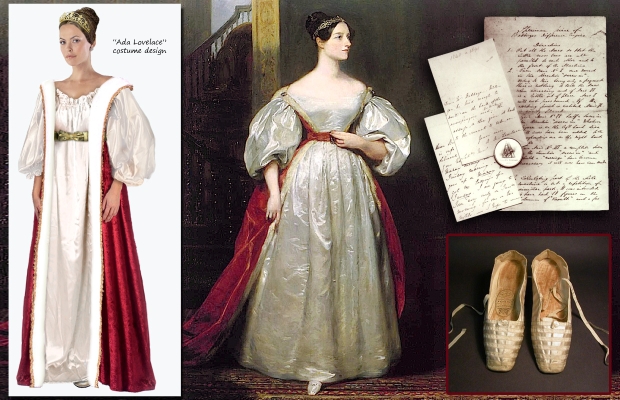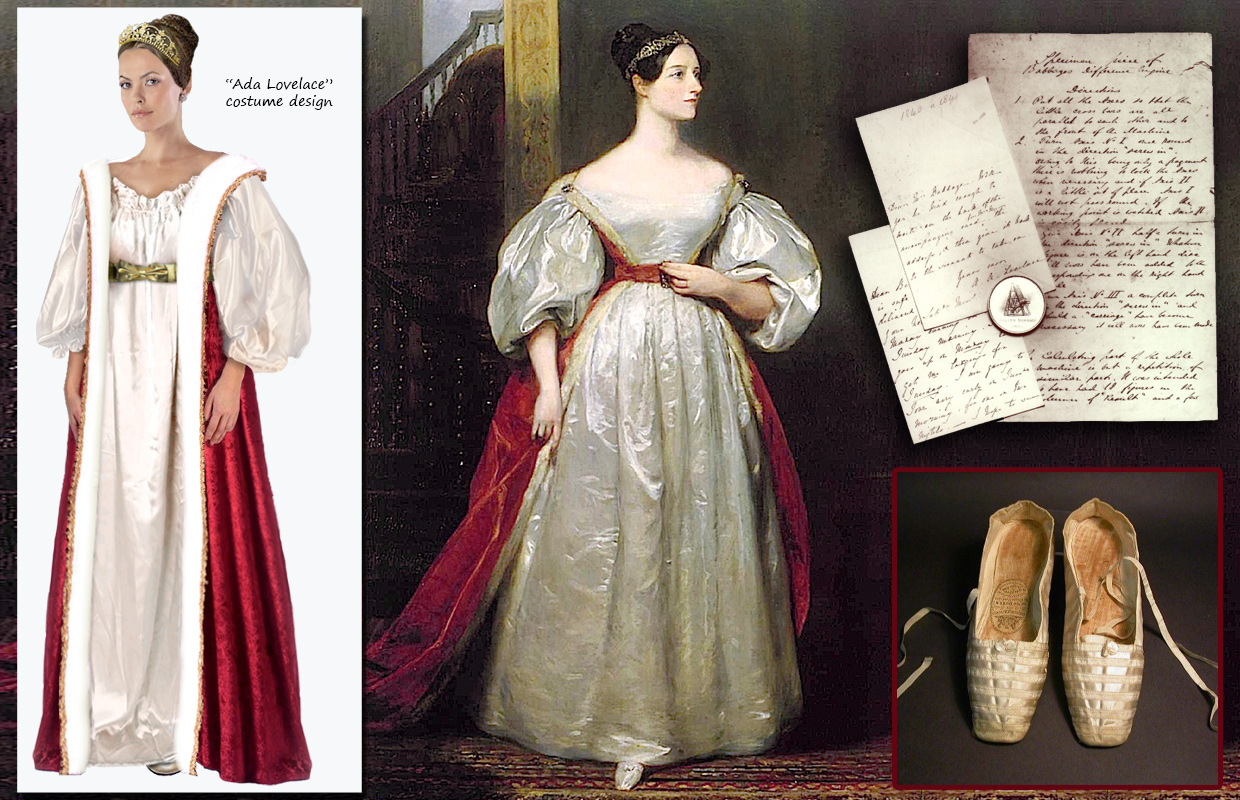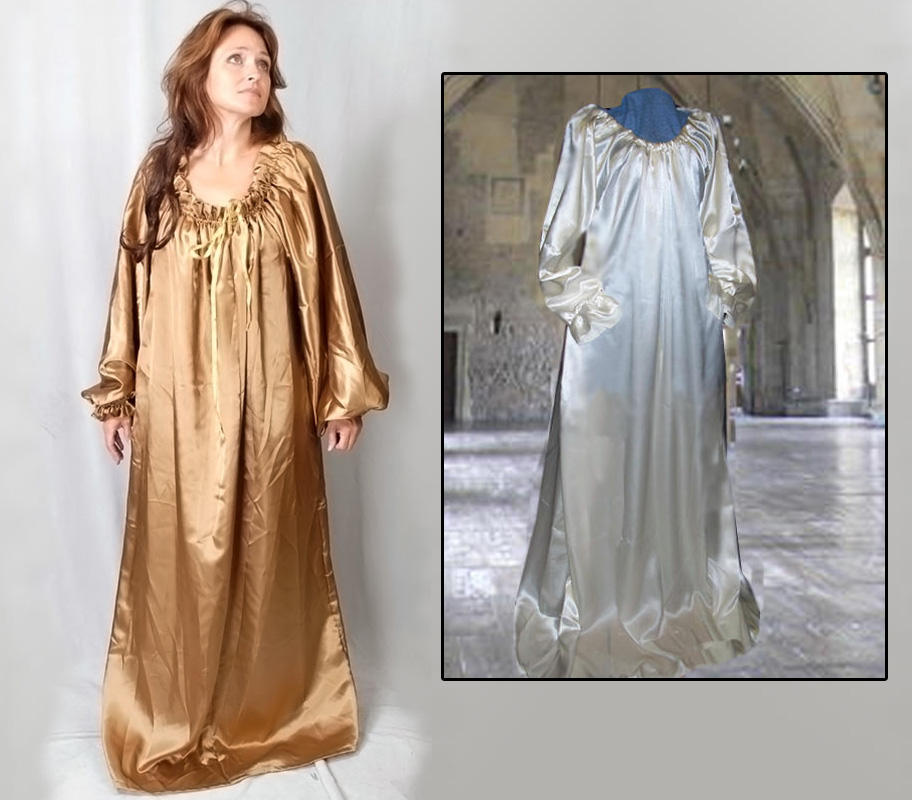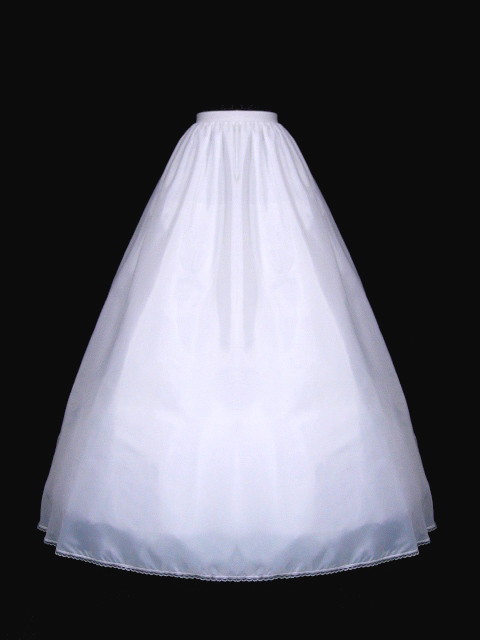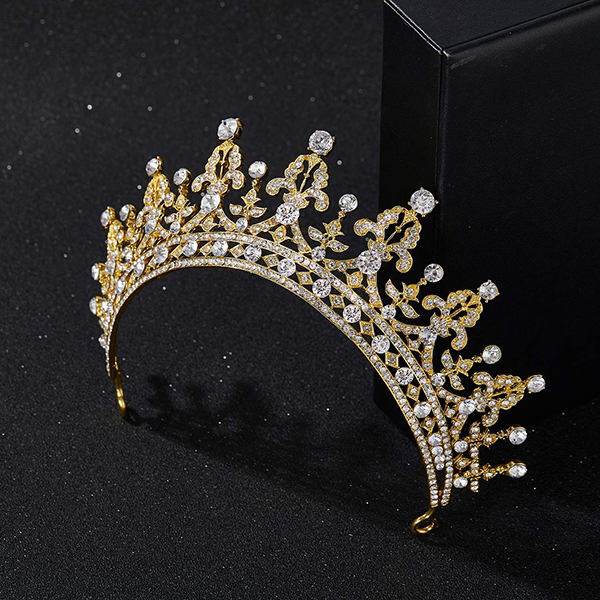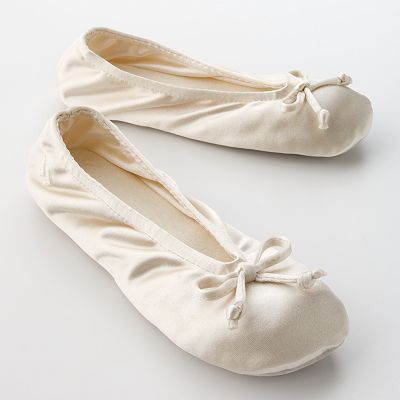Ada Byron Lovelace (1815-1852) was one of the most remarkable visionaries in the history of science. Her friend Charles Babbage invented the Analytical Engine to crunch numbers; it was Ada who realized that it could do much more. She saw that a mechanical device—a computer, if you will—could solve all kinds of analytical problems, as long as they could be treated algorithmically. She was a hundred years ahead of her time. Nowadays she’s recognized as “the world’s first computer programmer,” though we think that actually understates the novelty and breadth of her vision. It makes her sound a little like an early employee at IBM.
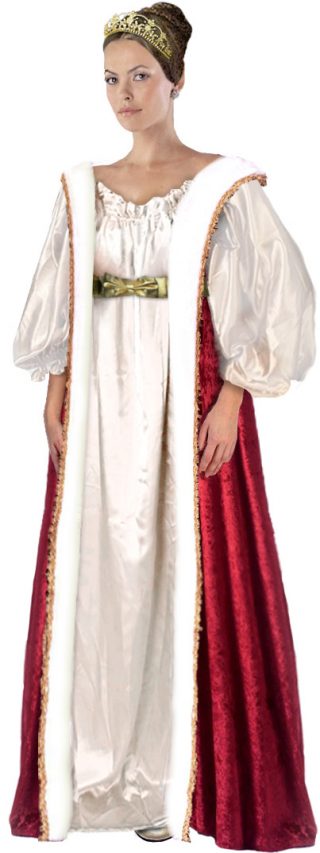 In addition to being a mathematical genius and scientific visionary, Ada was also an aristocrat. Her father was the mad, bad Lord Byron, and her husband was the Earl of Lovelace. The famous portrait of her above shows her decked out in court dress, 1836 style: white satin gown, red velvet robe, tiara. You can put together a reasonable facsimile with a long chemise and a costume king robe. The pieces we suggest, from left to right:
In addition to being a mathematical genius and scientific visionary, Ada was also an aristocrat. Her father was the mad, bad Lord Byron, and her husband was the Earl of Lovelace. The famous portrait of her above shows her decked out in court dress, 1836 style: white satin gown, red velvet robe, tiara. You can put together a reasonable facsimile with a long chemise and a costume king robe. The pieces we suggest, from left to right:
1. Ivory satin chemise. This is a RenFaire item that used to be widely available, but as of 2020 the only supplier we can find is Majestic Velvets. You’ll want the sleeves to puff out as much as possible (this was all the rage in the 1830s), so you might consider stuffing them with tulle or tissue paper.
2. Crinoline. Although Ada’s skirt looks amazingly puffy in the portrait, hoops hadn’t been invented yet. This is good, since our costume chemise won’t fit over a hoop skirt. It will fit over a hoopless crinoline though, which is what Ada would have been wearing.
3. Costume king robe. You’re going to need to cut this up a little bit to make armholes. It’s not hard: just separate the fake-fur lapel from the main body of the robe by opening the seam that joins the two. Do this at arm level, starting from the shoulder and going down about 18 inches. The gap you’ve created is your armhole. Safety pins will come in handy to make it all look nice and keep things in place once you’ve positioned the robe over the chemise.
4. Gold bow belt. That goes to an Etsy search page; we used a vintage belt on our costume. What seems to look best is to run the belt through the armholes you’ve made (#3), so that the belt is outside the robe in the back, but passes under the white fake-fur lapels in the front.
5. Gold tiara with crystals. If you don’t have a quinceañera or bridal tiara you can recycle, this will do the trick.
6. Isotoner satin ballet slippers. The small inset picture in our main illustration shows Queen Victoria’s 1840 wedding slippers, which were exactly the kind of thing Ada would have been wearing in her 1836 court portrait. They’re ballet slippers, basically; they even have ribbons. Modern Isotoners are an excellent substitute.
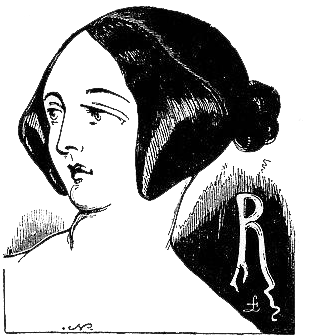 Hairstyle: In the portrait, Ada’s hair appears to be dressed in the classic early Victorian tripartite up-do. This blog has excellent pictures and instructions: Locks of Elegance Braided Victorian Hairstyle. The hair is combed flat and parted in the middle; then the hair in front (from the ears forward) is pulled into two sections. The remaining back section is braided or coiled into a chignon. The two front sections are combed flat against the face, and then looped back to meet up with the chignon. These two front sections can also be braided, which makes the looping back easier. Note that the look of this hairstyle is very different from later up-dos in the nineteenth century. The way the front sections are drawn forward and down is distinctive.
Hairstyle: In the portrait, Ada’s hair appears to be dressed in the classic early Victorian tripartite up-do. This blog has excellent pictures and instructions: Locks of Elegance Braided Victorian Hairstyle. The hair is combed flat and parted in the middle; then the hair in front (from the ears forward) is pulled into two sections. The remaining back section is braided or coiled into a chignon. The two front sections are combed flat against the face, and then looped back to meet up with the chignon. These two front sections can also be braided, which makes the looping back easier. Note that the look of this hairstyle is very different from later up-dos in the nineteenth century. The way the front sections are drawn forward and down is distinctive.
You do need to have longish hair to pull this off. If your own hair won’t do, you might consider an inexpensive brown wig that you can comb and braid.

